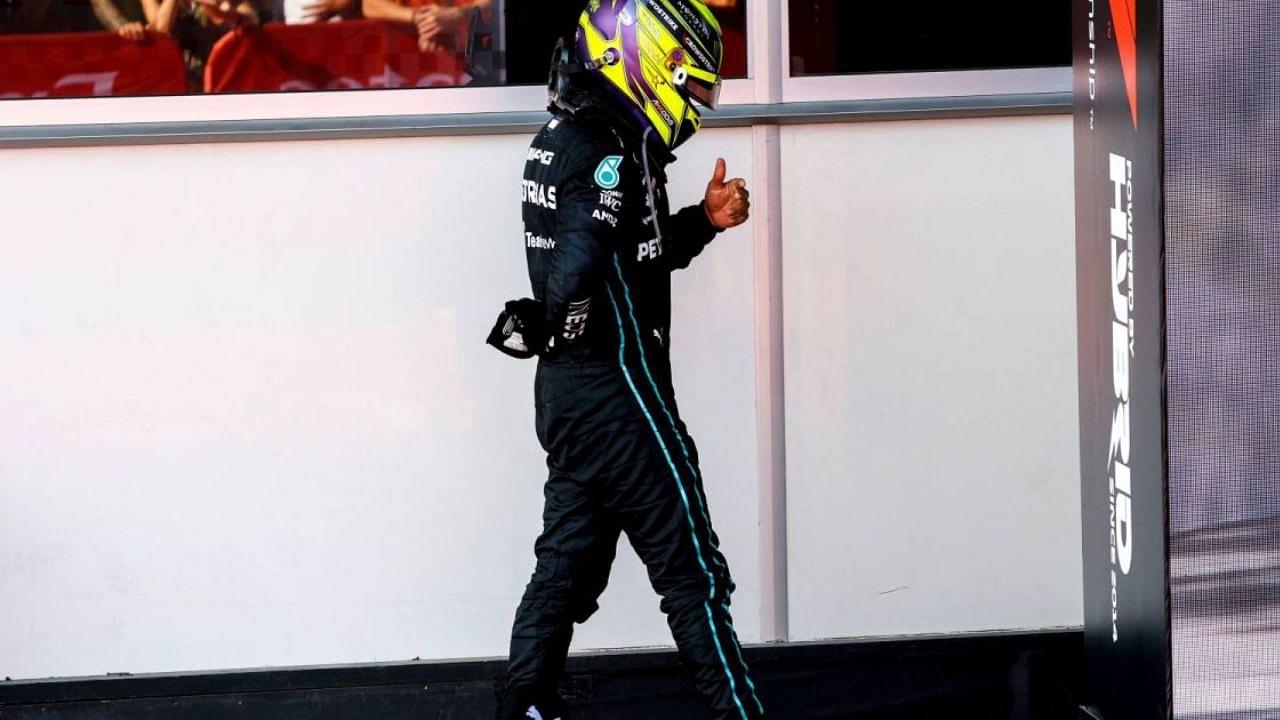One of the main talking points of the 2022 F1 cars have been the amount of porpoising in them which has raised several safety concerns.
During pre-season testing, the cars bouncing up and down on the straights led to fans getting familiar with the word ‘porpoising’. It is an issue that has affected every team this year, but some have fared worse.
Mercedes in particular have massively suffered from porpoising in the W13, which could be seen at last week’s Azerbaijan GP. Midway into the race, Lewis Hamilton took to the team radio to let his team know that the vibrations in his car were “killing” his back.
@MercedesAMGF1 @fia @F1 This major problem requires urgent immediate action to detail look how crippled @LewisHamilton is with that back pain, nobody wants to watch F1 and see drivers hurting like this. Porpoising is a health risk, sort it ASAP!! pic.twitter.com/pDsJeqmLAO
— (@SirHamilton44) June 12, 2022
After the race, Hamilton could be seen having difficulty in getting out of his car. Even when he did, the seven time World Champion had trouble in moving and it was a concerning sight for everyone involved. Many fans and figures in F1 questioned the adverse health effects drivers could have to deal with, if this issue becomes prevalent.
Professor Sidney Watkins, who was the head of F1’s medical team for 26 years, provided an insight on how vibrations can affect a drivers health, back in 1996.
Constant vibration at high speed can cause permanent damage to spine of F1 drivers
In his extract, Watkins describes how the constant bouncing and vibration can cause permanent and premature damage to a driver’s spinal cord. He wrote this back in 1996, before porposing was a constant in F1.
However, vibrations and bumpy surfaces were always common, and that applies to the current concerns drivers are facing on track.
“The spine receives vertical loading as a result of the car bumping over irregularities in the circuit,” Watkins stated. “This compresses and decompresses the intervertebral discs in the spine.”
Okay damn, this is actually scary. What porpoising may do to the drivers if it’s not taken care of maybe? https://t.co/VH9cSgeNGM
— sominslc (@sominslc1) June 13, 2022
“Due to vertical forces in the spine, disc protrusion is more likely to occur. Wear on the neck due to vibration and G-forces leads to early arthritic changes.”
Whether the current porposing shown by F1 cars can cause lasting damage is not known. However, the FIA and teams are now looking into the safety hazards and working on finding a prevention for the same.








